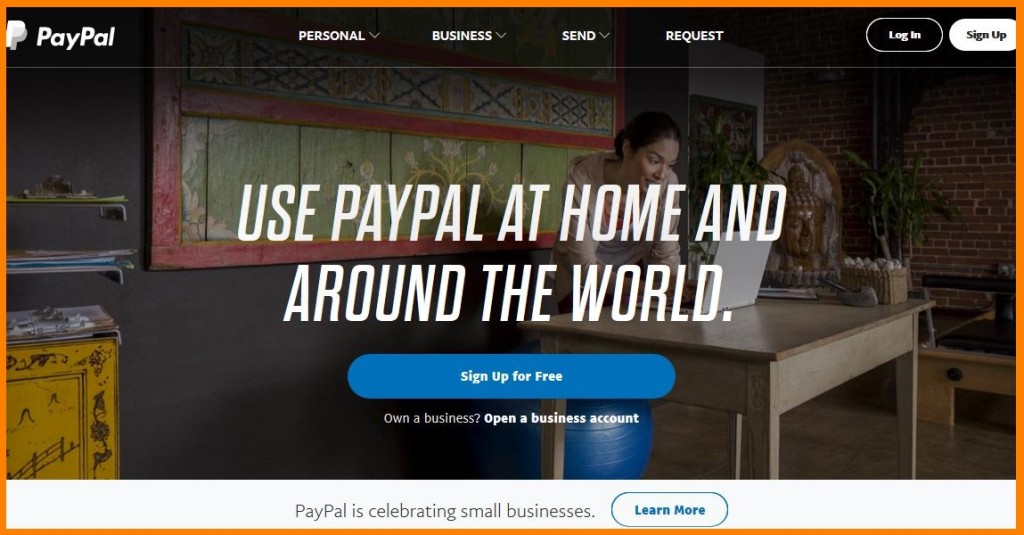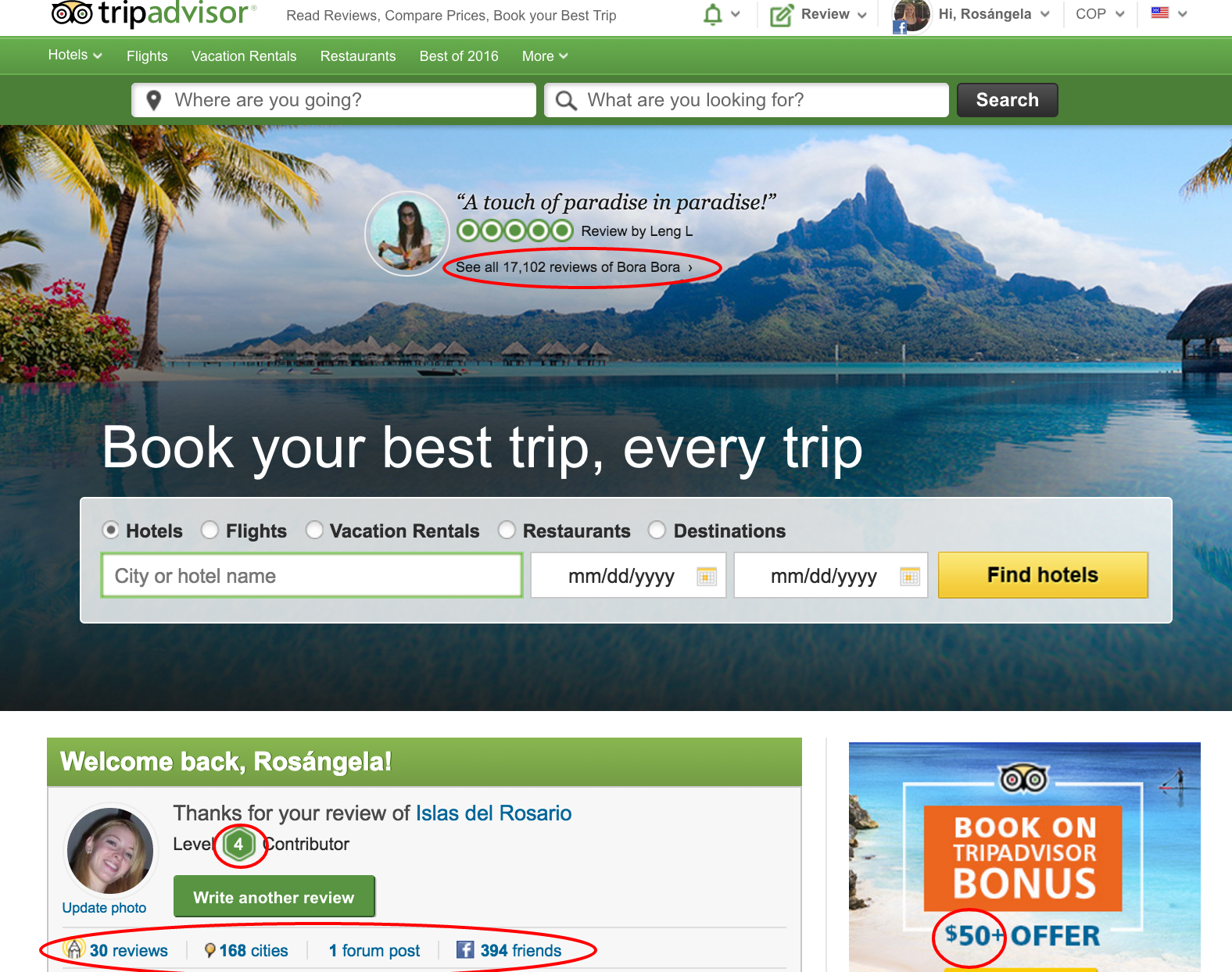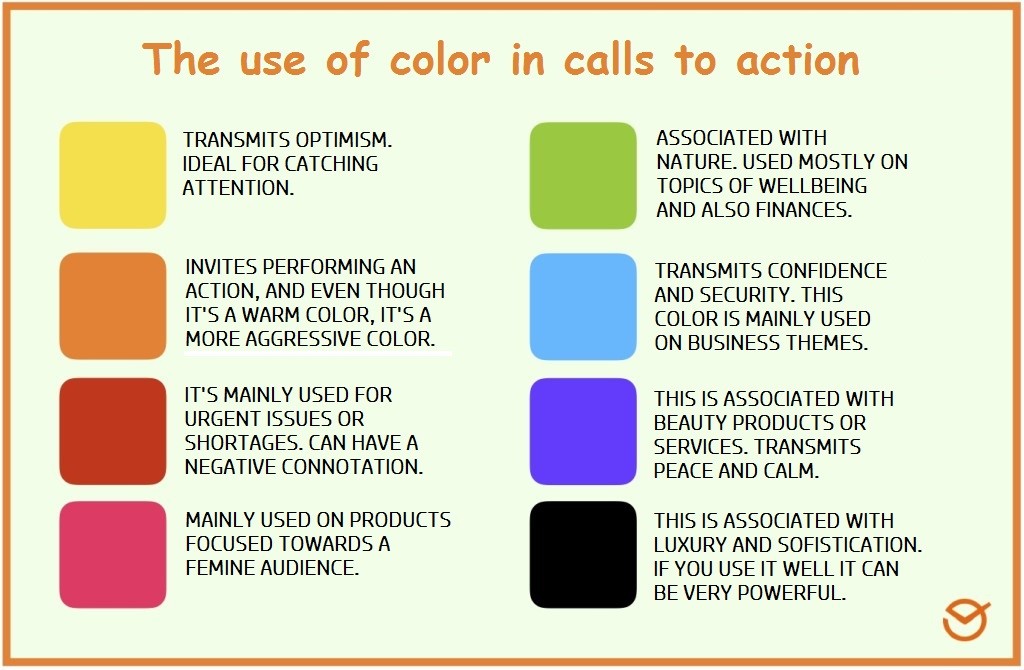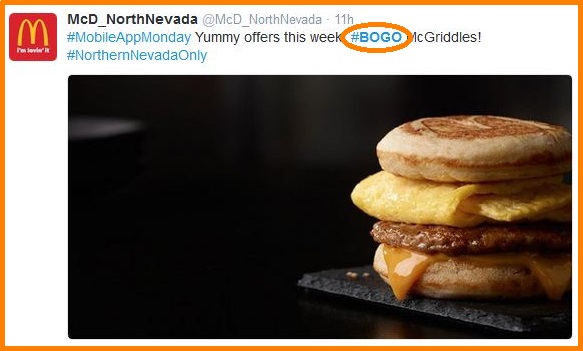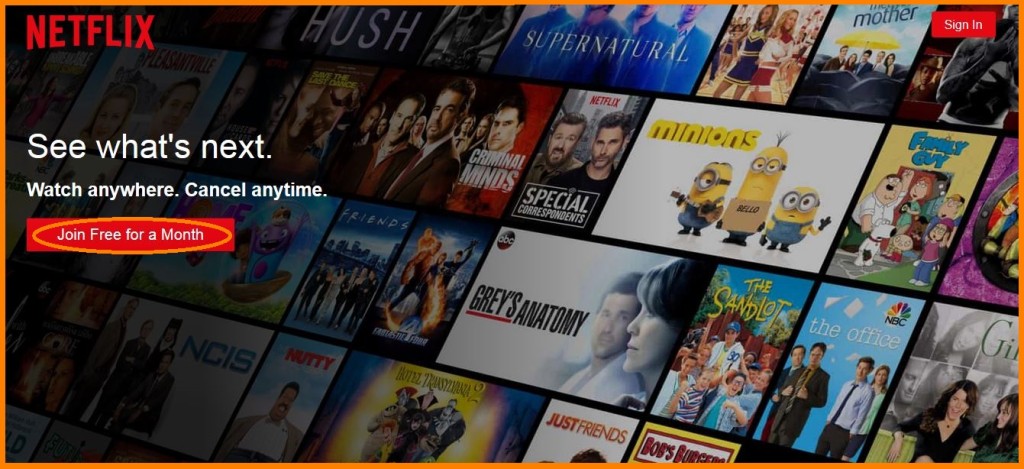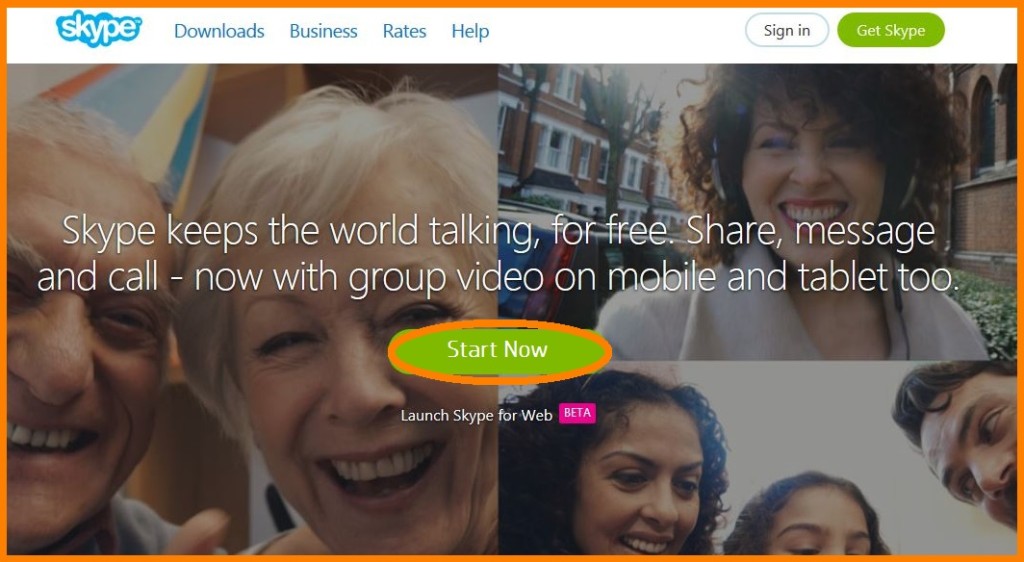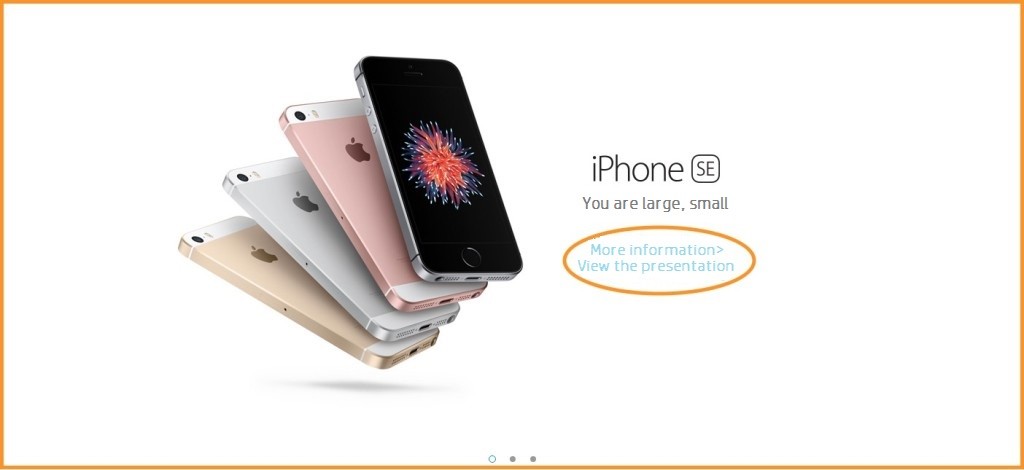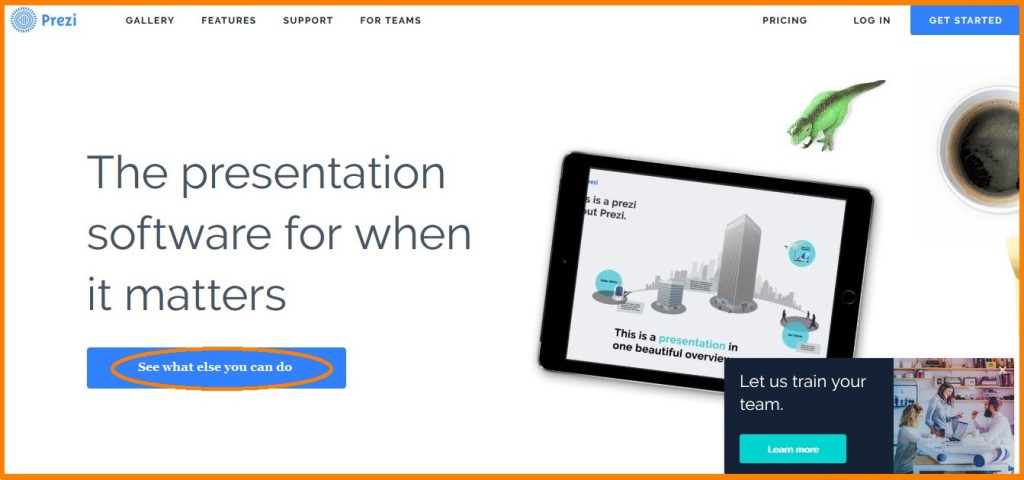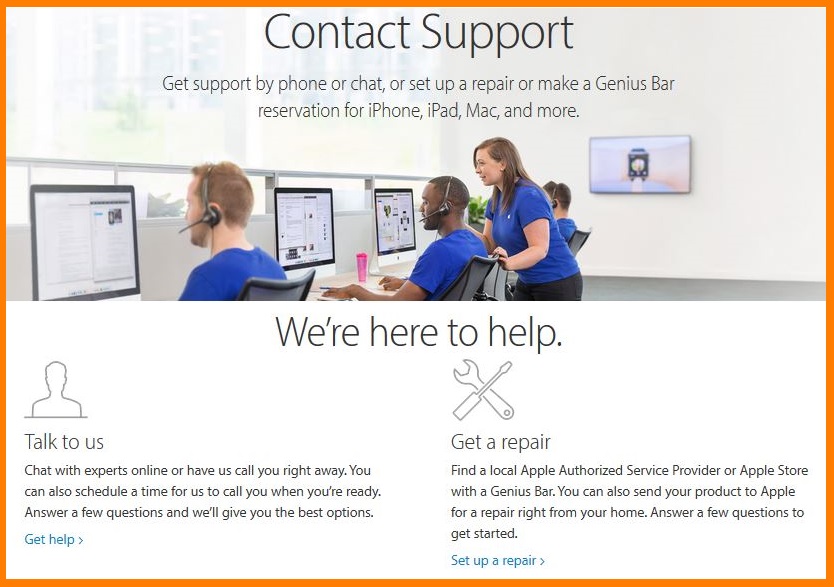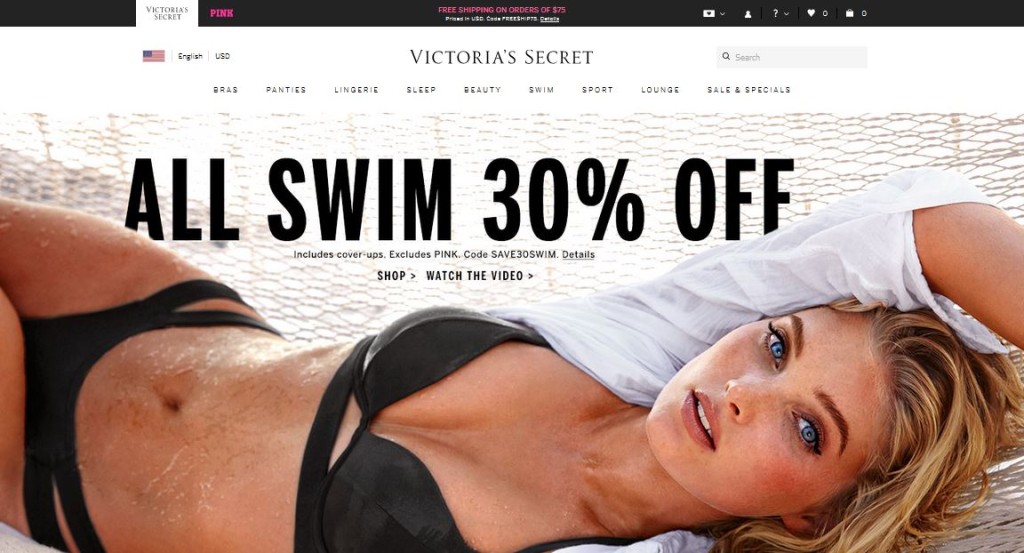Marketing is the closest thing there is to love: if you don’t tell the person that you are both interested in and attracted to this then they’ll probably never know how much you felt for them, and if you don’t show them all that’s within you they’ll barely know everything you have to offer.
But unlike love, where nothing is written and there’s no technique to ensure success, in digital marketing there are formulas created specifically to help you convey what is important to your audience and everything you have to offer them so when you ask them to marry your product they tell you yes. ?
And it’s here where one of the most important elements of every digital marketing strategy comes into play: calls to action. Forget about having a successful business without them; it’s as simple as that.
Do you want to know what calls to action exactly are, what they are used for and why you should use a call to action in each digital marketing action?
Then continue reading because in addition to all of this we’ll show you 10 tips for creating irresistible calls to action and various practical examples so when you finish reading them you’ll be an authentic expert in creating calls to action.
Will you accompany us? Then prepare some popcorn and get comfortable.

What are calls to action and why should you use them?
A call to action is a word, phrase or button that invites our users to take a determined action that we have previously defined.
You can use them on your web page, in a publication on Facebook, Instagram or any other type of social network, in articles and posts, in videos, landing pages, sales card, contests and promotions, emails, newsletters and in anything that reaches your objective public in its final destination.
And it’s calls to action that are indispensable when what we are looking for is for our users to connect with us and take a determined action.
Think about it:
How are you going to get your audience to take the action you want if you don’t tell them directly?
In something as obvious as this it’s the key, and this is precisely the function of calls to action: telling your audience in a friendly way what they have to do in a way so irresistible that they’ll want to run and do it.
So whether you are familiar with calls to action or not, let us give you one tip: make them your best friends because they have a lot to offer you if you learn to use them well.
Now, what are they used for and why should you use them?
Calls to action are used for…
- Generating leads
- Sharing on Social Media
- Lead Nurturing
- Closing sales
- Retaining your audience
- Promoting an event
Basically, their objective is to attract potential clients and convert them in to leads, sales and lastly into satisfied clients.
But the numbers are alarming:
Around 70% of small B2B companies don’t have any calls to actions and therefore fail to engage their ideal clients.
And the trends are clear in regards to this: it doesn’t matter the size of your company nor the market you are targeting: you need to incorporate calls to actions into your strategy.
Now comes the main question: is it okay to only tell the audience what they should do? The answer is NO, thus we should also pay attention to how to design these calls to action, what words and colors to use, where to insert them and how to carefully select them so they are effective.
Although it may seem difficult, it’s not and to demonstrate this to you we’ll share 10 tips that will help you to create highly effective calls to action along with 8 examples that will help you implement them. Let’s go!
10 tips for creating irresistible calls to action and convincing your clients to move ‘into action’
1. Keep your target public in mind
Creating a call to action doesn’t mean launching an offer and waiting for someone to see it, but rather creating and offering valuable content to each person you want to attract.
For this reason, you should know what your target public needs and what their interests and desires are, segment them and develop your calls to action based on this. Think about larger attraction resulting in larger conversions.
2. Make it easy and make it tempting
Tell your audience what they have to do, but do it by using flashy language with imperative verbs and exclamatory or interrogative sentences.
In other words, it’s not enough to just ask for something but it must be done in a way that is irresistible. The more easier and tempting your call to action is, the more options you’ll have for success.
PayPal for example could have opted for a “register on PayPal” but in place bet on creating much more elaborate and personal calls to actions that accompany the button and get better conversion.
3. Give them reasons to say “yes, I do”
Why should the user heed to what you are asking or offering in your call to action? Ask yourself this question before creating a call to action by finishing and always ensuring to include the variable that boosts taking action.
4. Numbers attract, include them
Numbers are an excellent way to draw attention and they also always work since they show the user exactly what they’re going to get, so feature them in your calls to action.
For example, if you are offering an e-book, add the number of pages it has, the number of technique they’ll learn or the real price next to the actual offer –this also works if it’s free-.
You can use numbers in any call to action. It’s a very good resource utilized by Tripadvisor, which plays with various numbers on their landing page:
5. Create a sense of urgency
Saying “subscribe now” is not the same thing as “you can subscribe whenever”. People are much more likely to perform an action when they see that there is a limit or shortage, whether it be time or available units (without getting too far off track, we can see it in the previous example with Vueling). Use this in your favor.
6. Opt for an attractive design
If you use a call to action in buttons or banners, opt for a good design that sets it apart from the rest of the page since it’s a key aspect for users to stop at.
Additionally, keep in mind that colors have an incredible power: the difference between using blue or orange can bring on very different results. It’s best for you to try and test things out.
For example, with ButtonOptimizer you can create different color buttons in just a matter of seconds, and so you know where to start, we’re sharing with you this info graphic that will give you an idea about the importance of each color.
7. Put your calls to action in the appropriate place
It doesn’t matter if you want to insert a call to action in your website, in an article or in a Facebook publication: it doesn’t matter how good the message is if it’s not in the adequate place you’re going to lose a lot of opportunities to multiply results.
8. Don’t include a lot of different calls to action
Inserting different calls to action on the same site or in a single piece of content may cause your audience to become confused; it’s best to define a single objective and focus all your efforts on creating a call to action that sells this goal.
9. Use words that cause an impact
Calls to actions aren’t magic, they are well applied formulas; and these formulas include the election of determined key words which demonstrate that the best actions sell better than the rest.
Some of the words that work best are: “start”, “learn”, “discover”, “do you want…?”, “do you need…?”, “free”, “try” or negative calls to action such as “problems” or “confused”.
10. Arrows help, don’t be afraid to use them
Inserting arrows around a call to action button is a very functional technique that makes the users attention go directly to the button, which you can ensure is seen by your audience and at that moment success become dependent on how attractive the call to action is. On Postcron we’re conscious of this.
8 formulas for creating a good call to action with 8 illustrative examples
Now that you know how to create effective calls to action, let’s move on to putting them into practice and see some concrete examples of the different calls to action you can create.
Many types of calls to action exist based on what your objective is and from where you want to include it, but we have come up with “8 personalities” so you can understand them and know where to start from.
They are more like 8 formulas for creating irresistible calls to action which if applied well, will give you huge results. Goal! Because you can also combine them together. ?
-
The Urgent
Its principle is based on showing urgency and conveying to the user that if you delay in taking action you can miss out on what we’re offering.
This technique has a high psychological impact, since the limited availability elevates the perceived value of the product.
The online accommodation reservation website, Booking, is a specialist at creating calls to action that wake up that sense of urgency, look what happens when we search for accommodations for 12 nights in Bombay:
-
The Irresistible
It involves using a call to action highlighting a steal or a bargain so to the user it seems so attractive that they can’t resist.
It can range from a “BOGO if you buy now” to a “buy it now and receive these gift certificates” or a “get a [benefit from your product or service] today only”.
When this model is used, the user feels like they could lose the opportunity to acquire the product or service, under special conditions.
-
The Generous
There are calls to action that we can’t resist clicking on, and one of them is the “try for free” or the “gift”.
It consists of giving something for free and this is used on landing pages as well as social networks, blogs or emails to offer free e-books, webinars and other highly valuable content in order to get conversions.
It’s also used a lot on service companies or online tools, where free use of the software or application is permitted for a certain number of days.
This is the case with FreshBooks, Shopify and Netflix who offer the option to try their services for free before the user makes a final decision.
-
The Impatient
This would be the typical “start”, “start now”, or any of its variations. This is a simple and short call to action and if you have limited space on your call to action button but you want to make a big impact then this is a good choice.
Skype and HubSpot are the two companies that tend to use it.
-
The Curious
This equates to the “read more” or “more information” calls to action. It’s classic, short and direct but appeals to the fundamental needs of the audience: the desire for information.
Apple is a specialist in this.
-
The Professor
A good example would be the “look at how it works” or “look at what you can do”; in addition to selling the product or service directly to the audience it provides information and teaches them how to use it.
This call to action helps promote curiosity and reduces the risk of provoking words such as “buy” or “subscribe”.
- The Advisor
Imagine you tell your audience that you are here to listen to them. Well, therein lies this call to action which basically aims for them to contact us by saying something along the lines of “talk to us”, which provides trust and intimacy.
-
The Mathematician
Like we already said, numbers attract, work and sell so there’s no reason not to use them and many reasons why you should incorporate them in your calls to action with the end goal of multiplying your effects.
But tell that to the e-commerce portal Victoria’s Secret, who with this call to action has opted to include text in all caps highlighting the big discounts right on their homepage which also allows you to simply click on the photo and start shopping.
Well, what did you think about this introduction to the fascinating world of calls to action?
Of course it’s your decision if you want to gamble on them or not, but we already advised you that once you start implementing them you’re not going to need a lot of time to see that this is one of the best decisions you’ve made in your life.
So put these tips into practice and share the results with us: we would love to know how your calls to action went!
And if you think that this article can help your contacts, feel free to share it with them. The more people who know about the importance of calls to action, the more profitable businesses there will be that exist. Long live calls to action!
